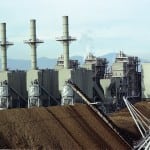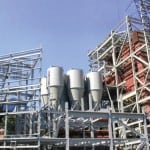Biomass energy has been an up-and-down industry for decades. As public awareness grows, it inevitably influences new tax legislation and environmental regulations. Two recent events have made the climate for development of this renewable resource even more volatile.
The Manomet Study’s Fallout
The public generally accepts the “renewable” or “sustainable” tag for biomass energy. “Carbon-neutral” seems to fit also, but a June study published by the Manomet Center for Conservation Studies calls that label into question. Or, to put a finer point on it, it calls into question the carbon-neutrality of a practice that has virtually no practitioners.
The Manomet study was a limited evaluation of forest biomass sustainability for energy production. The results pertain only to various types of woody biomass gathered directly from forest land, such as through slash and thinnings, as well as trees grown solely for energy use. This latter category, however, is irrelevant, as there are no timberlands planted for energy as the primary use. Non-forest biomass—mostly by-products of the paper, panelboard, and lumber (among other) industries—is the overwhelming source of biomass energy feedstock.
This study makes a key statement that has been widely ignored or misunderstood: “We do not consider non-forest sources of wood biomass (e.g., tree care and landscaping, mill residues, construction debris), which are potentially available in significant quantities but which have very different greenhouse gas (GHG) implications.” Well, yes, but one could add, “The non-forest portion of total biomass, which was not considered in this study, represents nearly all of the woody biomass currently used for energy production.” Also, the term “very different” should be replaced by “highly beneficial.”
Only a small fraction of the biomass currently used for energy would be classified by Manomet as forest biomass, and only a fraction of that involves actually cutting down trees. So, why a major study of such a minor issue? Manomet says it was only following the parameters set by the Massachusetts Department of Energy Resources (DOER). According to the state’s Department of Environmental Protection, which grants air permits, three permit applications were recently filed in the state’s western region that raised the profile of this issue.
All three were for biomass energy facilities that may have used a higher fraction of forest biomass. Thus, it seems reasonable for the state to commission such a study. What is unreasonable is the misleading characterization of biomass energy in the state administration’s June 10 press release. This document trumpets the unfavorable GHG implications of biomass power while virtually ignoring the difference between forest and non-forest biomass, and makes no attempt to bring the scale into context. In short, it was either written from ignorance or was a political hit piece. True to form, many articles with a decidedly anti-biomass slant came out shortly thereafter. Press releases from biomass industry groups attempted to debunk the misleading information coming from both mainstream media and anti-biomass interest groups, but you can’t unring the bell.
Going forward, both biomass feedstocks and energy conversion processes should be properly categorized, wherever possible. Certainly, a U.S. Energy Information Administration chart that compares fossil fuels, nuclear power, and renewables might show “biomass” as a single element. However, any document focused on biomass energy must, unfortunately, be laden with inelegant adjectives and include them even in titles and subtitles. More importantly, new legislative or environmental regulatory initiatives must properly classify the biomass types.
Negative Impacts of the EPA’s Boiler MACT Rule
The Environmental Protection Agency’s (EPA’s) recently proposed Boiler Maximum Achievable Control Technology (MACT) rule is the most stringent regulatory hurdle the biomass industry has faced in years. This rule is still being hotly debated, but it has quickly chilled new biomass energy development. It threatens to shutter many existing biomass energy plants as well.
This proposed rule would set new emissions limits by ranking existing facilities according to their current emission level for each individual pollutant and then averaging the lowest 12% of emission levels to determine the new limit. This arbitrary method ignores the fact that reducing certain pollutants sometimes comes at the expense of others. NOx and CO are the classic example. Another problem is that there is no exemption for transient but unavoidable start-up/shutdown conditions. Finally, some emission limits cannot be guaranteed at all. In the case of dioxins/furans, there is no commercially available control technology to meet some of the limits demanded. Without responsible original equipment manufacturers providing guarantees, projects cannot move forward.
Some are hopeful that these problems will get ironed out to the satisfaction of both industry and environmental advocacy groups. The larger issue, however, is cost. This rule makes no effort to tie compliance costs to public health benefits or environmental impact. Other than these, what is the reason to further tighten emissions standards nationwide? The air permit limits we have seen in recent years are already much lower than those anywhere else, including Canada and Western Europe. To avoid further weakening our economy, we need to be very careful about adding more burdens to domestic wealth-creating industries. Turning public perception against biomass and raising more regulatory hurdles is the wrong way to go.
— Greg Imig (gregi@mcburney.com) is senior project manager at McBurney in Norcross, Ga.









